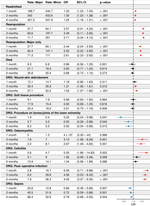Readmissions for Diabetic Amputations

Definitions:
- Minor amputations: Amputations at the foot or toes
- Major amputations: Amputations occurring more proximally than the ankle (i.e. BKA, AKA)
Over half of all lower extremity amputations (LEAs) in the United States occur due to peripheral artery disease, most often in conjunction with diabetes. Patients and providers often prefer minor amputations to major amputations, likely due to the perceived distress endured from the sudden disability of loosing a limb. However, failure to remove all infected/nonviable tissue in an effort to preserve the limb can result in prolonged treatment, multiple surgeries, and readmissions (potentially requiring reamputation more proximally).
Why are more minor amputations being done?
Two recent articles in Diabetes Care by Geiss et al and Harding et al showed that national rates of minor diabetic LEAs have been increasing in past couple of years, relative to the rates of major amputations. Geiss et al. used the National Inpatient Sample (NIS) to produce nationally representative estimates1 of the number of admissions for each amputation level, but couldn’t ascertain rates at the individual level2. Put otherwise, the NIS can tell us how many procedures surgeons are doing, but can’t tell us how many distinct patients are being operated on.
This presents a challenge in understanding these national trends. Are minor LEAs being done earlier in the disease course (potentially preventing the need for major LEAs)? Are minor LEAs being done on patients who actually need major LEAs, resulting in more re-operations during later admissions because initial management was too conservative?
The National Readmissions Database (NRD)
The National Readmissions Database is the only nationally representative readmissions database publicly available in the US, but unlike the NIS, it tracks patients across multiple hospital admissions (if they were admitted multiple times during that year). This allows us to take a more detailed look at these patients, and importantly, compare outcomes over time based on the patient’s index admission.
Propensity Score Matching
Propensity score matching is a process that allows us to compare situations where either major or minor amputations could have been used. This allows us to reduce indication bias, by only comparing patients who had similar characteristics at baseline (but were given different levels of amputations).
-
Harding et al used the U.S. Renal Data System to link to CMS data, so their analysis was limited to patients with ESRD. However, this is a robust registry, so it should be fairly nationally representative of the ESRD population. ↩︎
-
This is because the NIS doesn’t track individual patients, so a single patient who has multiple admissions contributes to the sample for each admission. ↩︎
